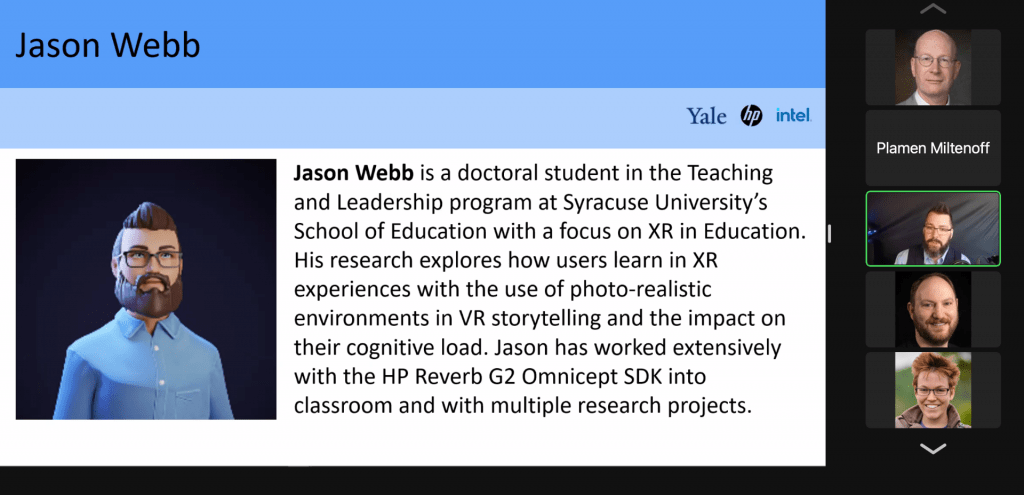Making Sense of Learning in XR
Tag: educational leadership
What is leadership, and who is a leader
With so many definitions of leadership, each organization needs to have a clear definition of what leadership is and what it means to be a leader within their company. The definition can evolve over time, but having even a basic, agile definition is better than no definition at all.
Leadership filters ensure the company has a consistent definition of leadership and that the people who best represent the culture and values are promoted to leadership positions. A leader focused solely on raising profits and earning more money wouldn’t fare well in a company focused on developing empathetic leaders. Leadership filters help promote the right people and maintain a cohesive work environment.
+++++++++++++
more about leadership in this IMS blog
https://blog.stcloudstate.edu/ims?s=leadership
Six Leadership Lessons
Six Leadership Lessons From Harvard’s “Girl President” Drew Gilpin Faust
Cami Anderson Jan 10, 2019
Drew Gilpin Faust, Harvard University’s first and only female president
1) Do It For The Right Reasons.
As a history professor early in her career, Drew never envisioned crossing over to university administration, “what my faculty colleagues call the ‘dark side.’” She would raise her hand for leadership tasks not because she wanted to get noticed, but because she felt it was “good citizenship to serve others.”
2) Don’t Be Afraid To Take The Leap.
3) Define Yourself Publicly, Or Others Will Do It For You.
“If you don’t define yourself publicly, someone else will, and it will likely be according to stereotypes,”
4) Gender Is Always An Issue, But Don’t Let It Derail You.
5) Understand That True Leadership Happens In The “Grey Space.”
Being the head of an organization often involves picking between the best of two imperfect choices, forging a path without having all of the facts, or breaking a tie between two competing factions.
6) Spend Political Capital To Plow The Path For Authentic Diversity And Inclusion.
++++++++++++++++++
more on ed leadership in this IMS blog
https://blog.stcloudstate.edu/ims?s=educational+leadership
hi ed leader team
https://www.academia.edu/8335887/Ways_to_Improve_Teams_in_Higher_Education
#2: THE MYTH ABOUT FOCUS
stellar teams allocate their time in an unexpected way. They spend two-thirds of their time on thetask at hand (gettin’ ‘er done) and a full one-third on the “process” or relational aspect of the team’s functioning
#3: THE MYTH ABOUT CONFLICT
Exceptional teams see conflict as a resource, not something to be avoided.
Leaders need both the skill and the courage to deal with conflict on their team, as well as the understanding that everyone on the team needs to be involved in its resolution.
#4: THE MYTH ABOUT OPENNESS
- the “ seduction of the leader ” syndrome frequently seen in higher education. Due to the “collegial” and polite nature of most campuses, people simply don’t feel comfortable providing honest feedback,especially if it is negative or critical.
- Many people are reluctant to be honest, because it might hurt someone’s feelings.
- People don’t want to “lose their seat at the table” and fear that they risk doing so if they are truly honest.
- People realize that the leader really isn’t open to honest feedback, even as the leader professes to want it
#5: THE MYTH ABOUT SAMENESS
#6: THE MYTH ABOUT MOTIVATIONAL METAPHORS
One of the best ways to build a realteam is to have each team membershare their own metaphor for how theywould like the team to operate.
5 STRATEGIES FOR DEVELOPING A STELLAR TEAM
1. Make your team a learning team, by creating an internal article or book club.
2. Define the rules for decision making.
3. Create working agreements or“ground rules” for the functioning and support of the team.
4. Establish a mechanism for regular, anonymous evaluation of team meetings.
5. Conduct a leadership “audit.”
++++++++++++++++++++++
more on leadership in higher ed in this IMS blog:
https://blog.stcloudstate.edu/ims?s=ed+leader
leader charts
What makes a great leader, explained in eight counterintuitive charts
June 5, 2018
https://work.qz.com/1297375/what-makes-a-great-leader-explained-in-eight-counterintuitive-charts/
Flexible Visionaries

Opinionated Adapters

Ego-Free Fighters

Intellectually Humble

Different And United

Supportive Adversaries

Angelic Troublemakers

Skeptical Optimists

+++++++++++++++

+++++++++++++++
more on ed leader in this IMS blog
https://blog.stcloudstate.edu/ims?s=ed+leader
more on incompetent leader (absentee leader) in this IMS blog
https://blog.stcloudstate.edu/ims/2018/07/14/incompetent-leader/
constant leader

+++++++++++++
more on leadership on this IMS blog
https://blog.stcloudstate.edu/ims?s=leader
big city superintendents
Wanted: Big-City School Superintendents
About a dozen cities are jockeying to woo an ever-shrinking pool of qualified candidates for an increasingly demanding job. By Lauren Camera Education ReporterApril 4, 2018, at 11:59 a.m. https://www.usnews.com/news/the-report/articles/2018-04-04/big-cities-struggle-to-fill-school-superintendent-positions
To be sure, big-city school superintendents are paid handsomely. In 2014, the salaries of superintendents at cities that are part of the Council for the Great City Schools ranged from $99,000 to $339,000, in addition to platinum health care, pensions, life insurance and other related benefits. Most superintendents of the biggest school districts clear $300,000 easily, with the job of helming New York City schools drawing upward of $500,000.
“Anybody who gets into this knows full well that the demands are extremely high,” Casserly says. “The context in which you do this job now is probably more difficult now than it’s ever been. It does give some people pause.”
++++++++++
more on school leaders in this IMS blog
https://blog.stcloudstate.edu/ims?s=school+leaders
collaboration creates mediocrity
‘Collaboration’ Creates Mediocrity, Not Excellence, According to Science
ed leadership conference
AGHE Annual Meeting and Educational Leadership Conference
Conference 1st to 4th March 2018 Atlanta, Georgia, United States of America
Website: https://www.aghe.org/events/annual-meeting
Contact person: Angela Baker
Tracks: Age-Friendly Environments; Business and Aging; Global Aging Curriculum and Policy Issues; Translating Research to Education and Training; Program and Curriculum Development; Workforce Development
leaders make feel safe
Why good leaders make you feel safe – Simon Sinek
http://ed.ted.com/lessons/why-good-leaders-make-you-feel-safe-simon-sinek
+++++++++++++++
more about leaders in this IMS blog
https://blog.stcloudstate.edu/ims?s=leader

